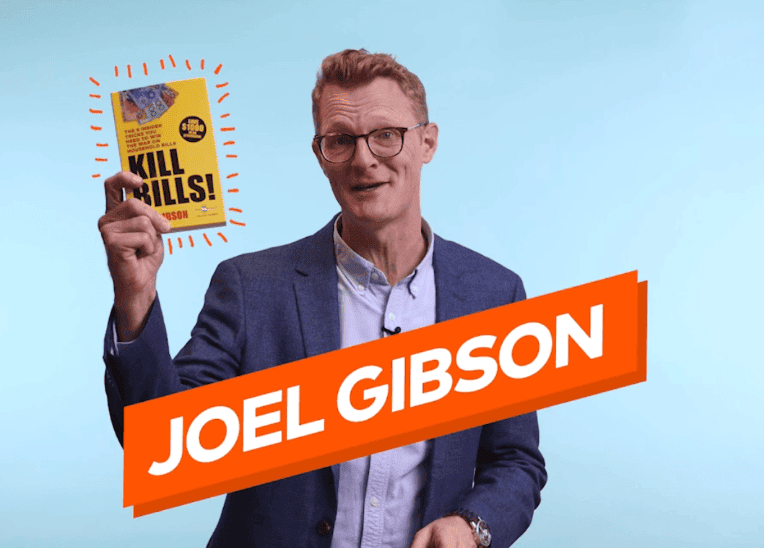
How To Save Money Fast On A Low Income: 21 Ways
We asked Joel Gibson for his Top 21 simple ways for Australians on a low income to save money.
It’s easier said than done. Saving money is hard enough when you’re earning a bunch of it. When you’re on a low income it’s even more difficult to put any aside.
What if you need to save $1000, for example, but you’re only earning $20,000 or $30,000 a year? Whether you’re a pensioner, a young person, or just in a lowly-paid job, ere are some of your best bets to save cash fast on a low income.
1 - Claim all your benefits and entitlements. The first rule of saving money is to ensure you maximise what’s coming in. There are hundreds and sometimes even thousands of dollars in assistance payments for low income earners around Australia, but locating them all can be like a full-time job. (Sometimes I think the government should give anyone who needs to deal with Centrelink their very own personal assistant to navigate all the red tape…) It’s worth the effort, though - once these are set up they’ll keep coming into your account on a regular basis.
2 - Contact Centrelink, aka ‘Services Australia’. Those two words (’Contact Centrelink’) can be a bit of an oxymoron sometimes. Centrelink can be bloody hard to contact. But ultimately, they’re the experts when it comes to federal government assistance and they can tell you what you’re eligible for. Start at the website, where they’ve created a form that you can answer to assess which payments you might be eligible for.
Centrelink payments include:
|
3 - Are you a CBA customer? Try their ‘Benefits Finder’. This is a feature in the CommBank app that asks you a few questions and then predicts which state and federal government benefits you might be eligible for. It’s not perfect but it’s pretty accurate, and a good place to start.
4 - Are you in NSW or VIC? Use the state government’s ‘Savings Finder’. This is also a tool that asks you a series of questions and then guesses which assistance you can get. NSW, for example, claims that it has “over 70 ways” for residents to save so answering six simple questions is the easiest way to cut through them all and zero in on the pens for you.
Service Victoria Savings Finder
Recent state-based examples include:
|
5 - Retired? See if you qualify for a Commonwealth Seniors Health Card. This is a card targeted at self-funded retirees but it’s estimated there are hundreds or even thousands of people who don’t know they’re eligible. Because it’s income-tested, not asset-tested, you might qualify even if you have plenty of assets - and if so you’ll get extra discounts on energy bills, prescriptions and more.
6 - Apply for a Low income Health Care Card. If your income is below these thresholds below in the 8-week period before you apply, you could get access to a range of discounts on prescriptions, power bills, property and water rates, public transport and registration.
Status | Weekly income | Income in an 8 week period |
Single, no children | $680.00 | $5,440.00 |
Couple combined, no children | $1,166.00 | $9,328.00 |
Single, one dependent child | $1,166.00 | $9,328.00 |
Couple combined, one child | $1,200.00 | $9,600.00 |
For each extra child, add | $34.00 | $272.00 |
7 - Student? Claim all your student discounts. There are websites such as UniDays and Student Beans that specialise in pulling together discounts for students so take a look. And if you’re still a teen, check out my Guide to saving money for teenagers too!
8 - Get some free Financial Counselling. A number of organisations offer this but if your problem is debt, try the National Debt Helpline on 1800 007 007.
9 - Take out a no-interest loan. Micro-finance group Good Shepherd offers these. Borrow up to $2000 with no fees and no interest for essential goods and services including:
- Household essentials
- Car Repairs and Registration
- Medical & Dental
- Technology
- Housing
- Education
10 - Check for “free money”. There are billions of dollars of our money sitting unclaimed in government, tax office and banks coffers - so see if some of it is yours. In your MyGov account, click through to the ATO and do a “lost super” search. Then Google ‘ASIC unclaimed money’ and see if the federal government is keeping any money in trust for you, and ‘[Your state] unclaimed money’ to check the state government coffers. I’ve seen some people find over $1000 they never knew they were entitled to.
11 - Work more. This is the most obvious way to get more money coming in - although it can also be easier said than done! A second job can boost your savings big time, not just because of the extra income but because you’ll often spend less if you’re working more too. Make sure you check first if there are any consequences of working more if you’re on a Centrelink payment: sometimes your payments reduce as you work more hours. If you’re just looking for a ‘side hustle’ rather than a second job, you could try rideshare driving for companies such as Uber or Ola, or delivering for Uber or Amazon, or doing odd jobs on Airtasker for an extra buck or two.
12 - Automate your savings. Once you’ve maximised what’s coming in, the next step is to minimise what’s going out! One of the best ways to do that is to automate: set up a direct debit and move a percentage of your income into a dedicated savings account on the day you’re paid each fortnight/month/whatever. This way you don’t even have to think about saving vs spending: you just have to live on what’s left over.
13 - Check out Saver Plus. This is a financial education program run by the not-for-profit Brotherhood of St Laurence and backed by the federal government and ANZ Bank. You set savings goals and they help you to reach them, even matching your savings up to $500 for certain education-related goals. To be eligible, you must have all of the following:
- Health Care Card or Pensioner Concession Card AND an eligible Centrelink payment*
- Be in school yourself OR have a child in school (can be starting next year)
- Have regular income from work (yourself or your partner)
- Be 18+ years old
14 - Make a budget. It sounds simple enough, but mapping out where your money goes usually reveals wastage that you weren’t really aware of. Eating out every week, for example, or getting take away delivered twice a week, could be costing you $100 a week or $5000 a year. That’s a lot of cash! My colleague Jess Irvine has written a popular book about budgeting and offers free budgeting spreadsheets on her website here. ASIC Moneysmart also has free resources here.
15 - Delete delivery apps from your phone. See ‘Make a budget’, above. It’s just too easy to blow all your dough on takeaway. Some restaurants will even give you say 15% off now if you come in and collect your food.
16 - Chop up the credit card! This is another way to spend less. Credit cards allow you to spend money you don’t have and they can be an ugly trap if you don’t pay them off every month. A debit card does just about everything a credit card does, so why not get one and chop up the credit card. Points and rewards schemes can look very attractive but in my opinion, you only really come out ahead if you’re running a small business through them or you’re so cashed-up that you spend thousands of dollars every month on the card and always pay it off. Chop it up. You’ll never look back.
17 - Buy second-hand. Gumtree and Facebook Marketplace are treasure troves of bargains. Not only will you spend less if you buy your furniture and other essentials second-hand, but it’s great for your carbon footprint.
18 - Sell your car and use bikes, carshare and public transport. Petrol prices are through the roof so why not avoid them if you can. Also, used car prices have risen since the COVID-19 pandemic so if you’re ever going to sell a car, now is a good time.
19 - Save on groceries. It’s one of our biggest bills, and I’ve written a whole guide to how to get it down over here, from meal planning, to shopping at Aldi and Costco, to finding cheap substitutes for the most expensive products.
20 - Got a family? Maybe these guides to saving money for families and saving money as a teenager could be helpful too.
21 - Get to know the online bargain-hunter sites. Check out Ozbargain.com.au, for example, where dedicated money-savers post everything from the latest KFC special to the cheapest home loan. You’ll find dozens of ways to save a buck each day, and if you subscribe to their daily email, they’ll send it all to you!
Joel Gibson is amaysim’s “Money-Saver in Residence” for 2022. He’s a money-saving expert who wrote the book KILL BILLS! He shares his best tips and hacks regularly at the Sydney Morning Herald, The Age, The Today Show, 2GB, 4BC and ABC Radio.
#savings #saving



